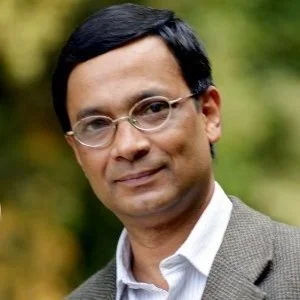Welcome to a seminar/webinar with Prof. D. D. Sarma from Indian Institute of Science in Bengaluru, India. This is a hybrid meeting with the option to join remotely with Zoom or come in person to LINXS.
When: Thursday June 16, 13:30 - 14:30
Where: LINXS premises 5th floor, Ideon Delta 5, Scheelevägen 19, LUND or through Zoom
Title: Vegard’s Law and chemical pressure: Do we understand these concepts?
Recording coming soon
Abstract:
It is well known that lattice parameters of most alloyed solids can be interpolated almost linearly with the composition between those of the two end-members. This is the celebrated Vegard’s Law, which has been confirmed with a high degree of accuracy by a considerable body of structural investigations over many decades using the x-ray diffraction technique. Many properties, such as bandgaps of alloyed semiconductors, also show a similar linear behaviour between the end-members with composition. These observations form the basis of the vast literature aimed at tuning properties by making solid solutions. A closely associated concept of chemical pressure is achieved by typically substituting a cation in a solid with another ion of a different size, defining a dilute alloy. This technique not only allows to exert positive pressure by doping a smaller cation akin to the physical pressure but also makes it feasible to explore the negative pressure regime inaccessible otherwise with the help of a larger-sized dopant. While these concepts are universally accepted and much used in designing new compounds with tailor-made properties, a closer, microscopic inspection based on EXAFS studies of solid solutions such as Zn1-xCdxS and ZnSexS1-x reveals1-3 many surprises not fully appreciated in the past. Based on these recent studies, I shall illustrate the limits of these concepts and provide a rationale for their apparent success despite several conceptual difficulties.
References
1. Soham Mukherjee et al., Phys. Rev. B 89, 224105 (2014).
2. Tinku Dan et al., Phys. Rev. B 104, 184113 (2021).
3. S. Sarkar et al., Phys. Rev. B 105, 184201 (2022)..
Bio:
Dipankar Das Sarma obtained the MSc (Physics) (1977) from IIT Kanpur and PhD (1982) from Indian Institute of Science (IISc), Bangalore. He was a Research Associate in IISc (1982-83), and Guest Scientist at Kernforschungsanlage, Germany (1984-86). He worked as Lecturer (1986-89), Assistant Professor (1989-93), Associate Professor (1993-99) and Professor (1999- ), all at IISc. He was Visiting Professor, University of Tokyo (2001-02) and the Istituto di Struttura della Materia, CNR, Rome and Trieste (2002). He is a Member of the Centre for Condensed Matter Theory, Department of Physics, IISc. He was MLS Chair Professor of Physics and Chairman, Centre for Advanced Materials, Indian Association for the Cultivation of Science (IACS) for sometime. He is also Honorary Professor of JNCASR, Bangalore, Adjunct Professor at TIFR, Mumbai, Adjunct Professor at IISER, Kolkata, and Senior Associate at SNBNCBS, Kolkata.
Das Sarma has worked extensively on physics and chemistry of materials with special emphasis on nanomaterials and strongly correlated materials. He has made significant contributions in the fields of electron spectroscopy, materials synthesis, and in understanding their electronic, magnetic, dielectric and optical properties combining a variety of experimental techniques with theoretical investigations. Recently, he has established the Centre for Advanced Materials at IACS where a large number of faculty members interact on various aspects of research on advanced materials. The idea is to combine the expertise in physics, chemistry and biology available with these faculty members from different departments to explore new possibilities of synthesising and investigating advanced materials, which may belong to hard or soft condensed matter, to molecular or supra-molecular matter, to nano, self-assembled, biology-inspired, polymeric, or biological materials. He has more than 330 scientific publications to his credit, and has so far trained more than 15 PhD students.

